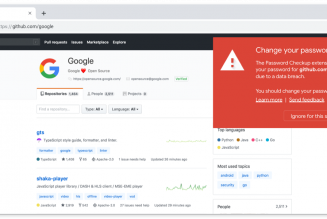/* custom css */
.tdi_4_3c5.td-a-rec-img{ text-align: left; }.tdi_4_3c5.td-a-rec-img img{ margin: 0 auto 0 0; }
The highly contagious COVID-19 Delta variant that is currently causing a massive third wave of infections in South Africa may cause the fourth wave of infections in Kenya over the next two months. This is according to Kenya’s Health Ministry.
First identified in India and the cause of significant desolation in the Asian country, COVID-19 Delta is dominant in the West of Kenya, where it was initially detected in the country. In response, Kenya’s government has imposed restrictions on movement in the region in attempts to stem Delta from spreading nationwide.
Kenya had 183,603 confirmed Covid-19 cases and 3,621 deaths as of June 29, according to the Health Ministry.
/* custom css */
.tdi_3_27c.td-a-rec-img{ text-align: left; }.tdi_3_27c.td-a-rec-img img{ margin: 0 auto 0 0; }
“If there’s a fourth wave in July-August, it will most likely be due to delta,” said Patrick Amoth, the acting director-general for Health at the ministry, quoted by Bloomberg.
Amoth continued to say that restrictions were being imposed in order to “avoid a catastrophic fourth wave.”
COVID-19 Continues to Surge Across Africa
A new wave fuelled by the Delta variant in Kenya would follow surges seen in several countries across Africa, including Uganda, Namibia and the previously mentioned South Africa.
In SA, President Cyril Ramaphosa tightened restrictions in the country considerably in order to halt the uncontrolled spike in new infections – banning access to alcohol and restricting movement in and out of Gauteng, SA’s economic hub and the current wave’s epicentre.
The parliament in Uganda has been closed for 2 weeks, with the country stating that its army will help ramp up the production of oxygen given new spikes in demand.
Bloomberg notes that infection cycles, or waves, continue for longer periods in Africa as the continent continues to lag behind the rest of the world in vaccinations due to shortages of doses, logistical challenges and restricted access to vaccine manufacturers.
Only about 0.8% of the population of Namibia is fully vaccinated, yet it’s the country where the infection rate over the last week is the highest in Africa.
Kenya Prepares for the Worst
Kenya’s third wave of infections was reportedly dominated by the COVID-19 Alpha variant, first identified in the UK and considered the first mutate of the original COVID-19 strain. The country’s third wave peaked in March – April this year.
The Beta strain first detected in South Africa, together with Alpha account for about 70% of the cases in Kenya’s capital, Nairobi currently, according to Amoth.
About 1.3 million people have been inoculated so far in Kenya, of which 328,848 received their second doses. The government is expecting a further 13-million more doses of Johnson & Johnson vaccines from August and is targeting to inoculate 10 million people by end of December and the entire adult population of 26 million by end of 2022. This is according to President Uhuru Kenyatta via a televised speech on Tuesday.
“It is now clear that we can not exclusively depend on foreign partners and their systems to resolve our health crisis,” Kenyatta said.
“In that regard, we must substantially prepare ourselves for the next crisis.”
The President also announced plans to construct a fill-and-finish vaccine facility in the “medium-term” with long term goals set for the building of a human-vaccine hub in the future.
By Luis Monzon
Follow Luis Monzon on Twitter
Follow IT News Africa on Twitter
/* custom css */
.tdi_5_d39.td-a-rec-img{ text-align: left; }.tdi_5_d39.td-a-rec-img img{ margin: 0 auto 0 0; }










